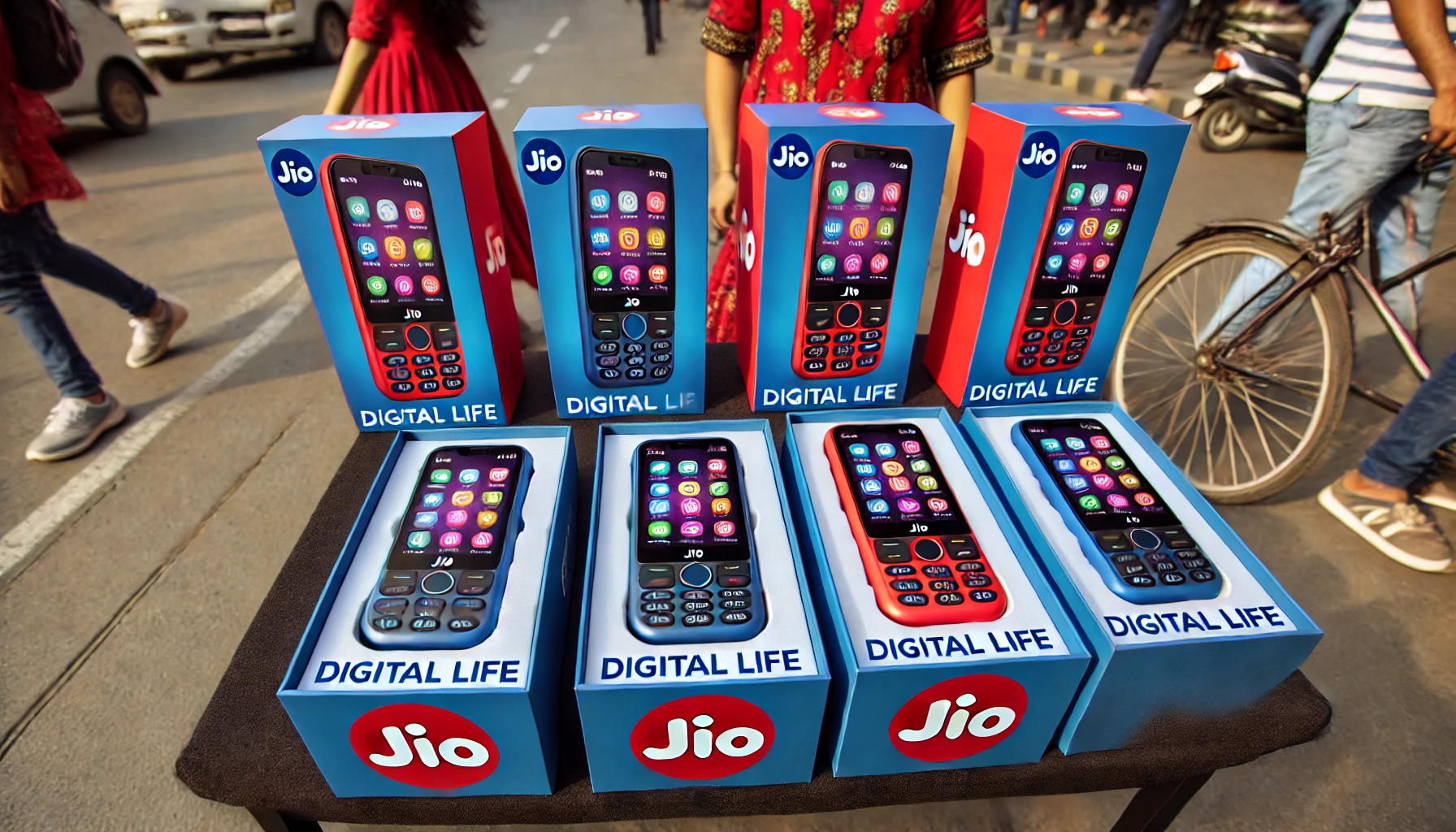
India, the world’s second-largest smartphone market after China with around 750 million users, is experiencing a slowdown in new smartphone sales. Many consumers find it difficult to afford a brand-new smartphone, leading to a number opting to stick with their existing feature phones or upgrade to newer feature phones instead. This trend has resulted in an unexpected growth in feature phone shipments, even as these devices are considered outdated with limited functionality compared to smartphones.
According to data from market analyst firm Counterpoint, feature phone shipments in India grew by 10% year-on-year in 2023, a notable rebound from a 31% decline in 2022. This increase is driven by consumers who prefer feature phones over smartphones. Within the feature phone market, 4G feature phone shipments have surged to 25% in 2023 from 9% in 2022, though 2G feature phones still dominate with a 75% market share.
| Category | Percentage Share |
|---|---|
| 4G Feature Phones | 25% |
| 2G Feature Phones | 75% |
Leading the 4G feature phone market is Indian telecom giant Reliance Jio, with a 27% share. It is followed by Itel, owned by Transsion Holdings, with a 24% share, and Indian phone maker Lava, with an 18% share. Jio’s range of feature phones, coupled with dedicated tariff plans and access to digital services like the Unified Payments Interface (UPI), JioCinema, JioTV, and WhatsApp, have made these devices attractive to many consumers.
- Reliance Jio: 27%
- Itel (Transsion Holdings): 24%
- Lava: 18%
Tarun Pathak, research director for devices and ecosystems at Counterpoint, mentioned that Jio’s 4G feature phones have hindered smartphone adoption in the country as these feature phones now offer basic apps.
In response to the growing preference for feature phones, Jio is quietly planning to introduce a 5G feature phone. This move comes as smartphone brands struggle to attract first-time buyers in the South Asian market. Jio, owned by Reliance Industries, has been a great player in the feature phone segment for years and had previously partnered with Google to launch smartphones. However, their first smartphone did not perform well due to its high price relative to its specifications.
The upcoming 5G feature phone will run on Linux-based KaiOS, similar to Jio’s current feature phones. Contract manufacturers Dixon Technologies and NeoLync are prototyping the new handset, with an expected announcement at Reliance’s annual general meeting in August. However, the phone is not likely to be ready for mass market release immediately, and its pricing is still under consideration.
Jio is also in initial talks with Qualcomm for the early version of its 5G feature phone, though other chipmakers might be involved as development progresses. Qualcomm has denied participation in these discussions, and Reliance Industries has not commented on the matter.
In addition to the 5G feature phone, Jio plans to launch a 5G Android tablet and a 5G smartphone this year. This expansion aims to increase Jio’s telecom revenues as it works on monetizing 5G connectivity. Recently, Jio, along with competitors Airtel and Vi, raised tariffs to boost subscription revenues. Jio is also expected to spin off from Reliance and list as a public company on Indian stock exchanges with a valuation of $112 billion as early as next year.
Jio’s Device Portfolio Expansion
- 5G Feature Phone
- 5G Android Tablet
- 5G Smartphone
Since the launch of its first 4G feature phone, JioPhone, in August 2017, Jio has made strides in the feature phone market. The JioPhone, based on KaiOS, quickly became the top-selling feature phone in India. It later received support for popular apps like Facebook, WhatsApp, and YouTube.
In 2018, Jio introduced the JioPhone 2, a next-generation feature phone with a QWERTY keyboard, though it did not replicate the success of the original JioPhone due to limited availability. Last year, Jio launched the Jio Bharat series, a $12 feature phone, and updated the original JioPhone with the JioPhone Prima. These models have contributed to the growth of 4G feature phones in India.
Despite a 11% year-on-year growth in smartphone shipments in the first quarter of 2023, driven by the super-premium segment (over $800), the entry-level segment (sub-$100) saw a decline. The share of entry-level smartphones fell by 14% year-on-year to 15%, down from 20% a year ago.
Market experts attribute this decline to the reluctance of feature phone users to switch to affordable smartphones. Navkendar Singh, associate vice president for devices research at IDC, noted that around 350 million people in India still use feature phones, with 50% owning models that cost less than $18. Many users replace their feature phones rather than upgrading to smartphones due to financial constraints.
- High price difference between feature phones and smartphones
- Less than 50% smartphone penetration
- Resistance among older and low-income consumers
- Average selling price (ASP) of smartphones in India has increased to $255
The average selling price of smartphones in India has risen significantly, making them less affordable for many consumers. While India has some of the cheapest smartphones globally, their cost as a percentage of users’ income is higher compared to countries like the U.S. and U.K.
Smartphone brands have introduced finance options to attract buyers, but these have primarily helped existing smartphone users upgrade their devices rather than encouraging feature phone users to switch.
As the Indian smartphone market continues to evolve, it remains to be seen how companies like Jio will navigate the challenges and opportunities presented by the growing demand for feature phones and the slow adoption of smartphones.
Featured Image courtesy of DALL-E by ChatGPT
Follow us for more updates on Reliance Jio.
